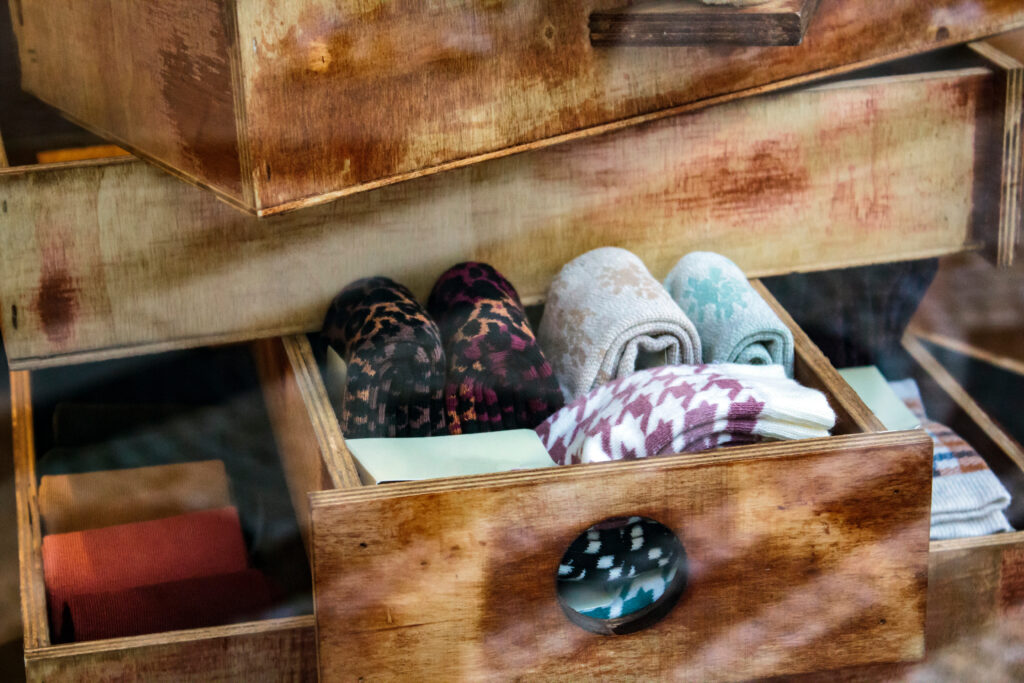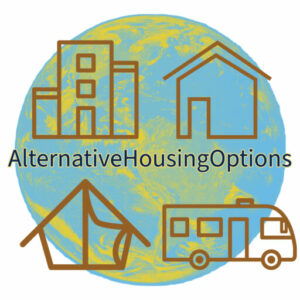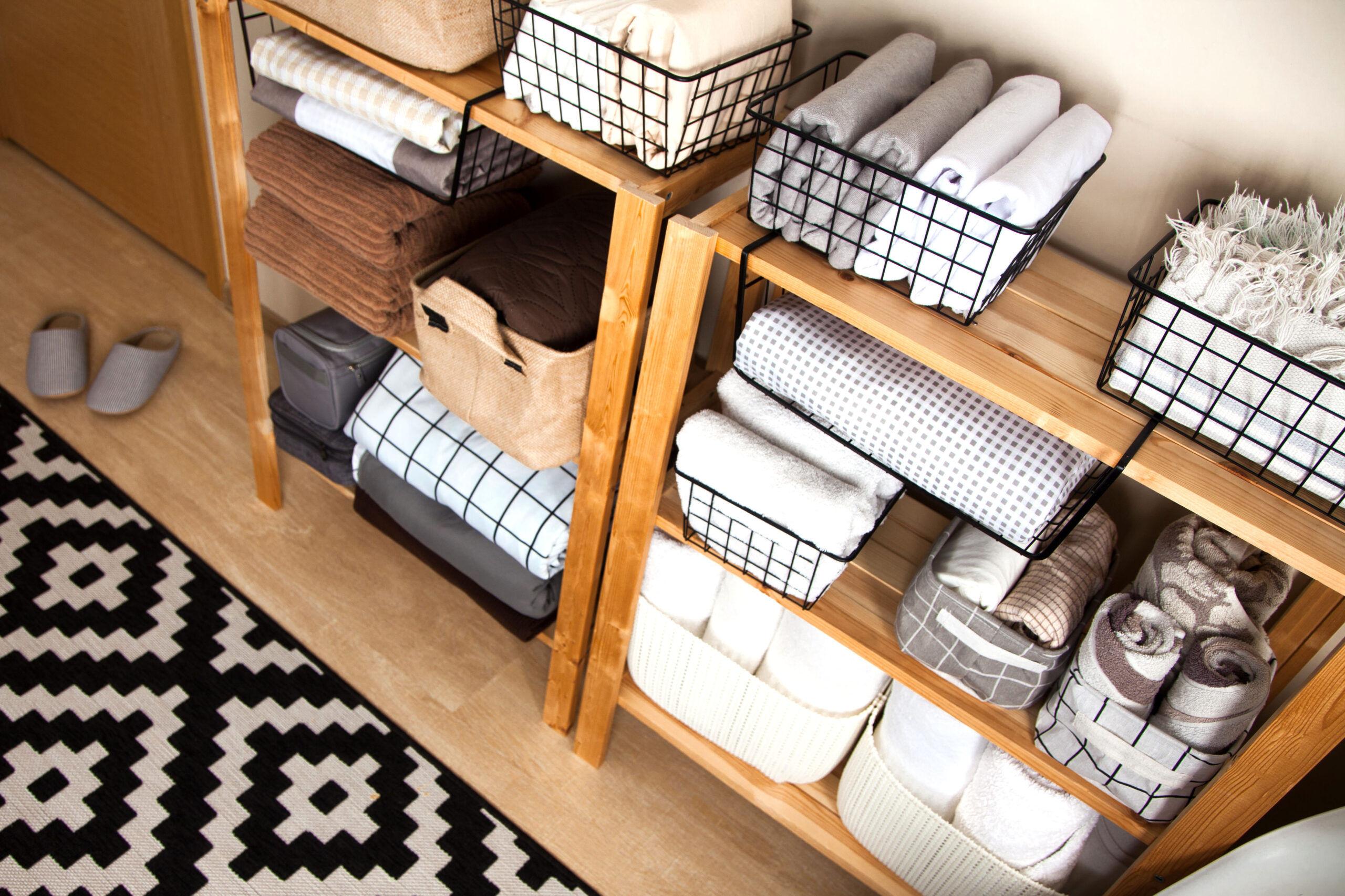An alternative housing lifestyle can be quite different than living in a stick-built house or apartment. The size of your new home, daily cleaning and cooking, sleeping quarters, and bathroom arrangement will all be new. They will bring with them personal growth opportunities you may not have had to face before. You need to overcome a couple of significant challenges if you consider one of the many alternative housing options. Let’s look at how to prepare for an alternative housing lifestyle.
The top issues with an alternative housing lifestyle are the size of the home, cleaning, cooking, storage, sleeping quarters, and bathroom facilities. We’ll dive into these in detail, but you’ll have to:
- Downsize your belongings or store them
- Find appliances appropriate for your power source
- Discover new cooking methods
- Set up proper sleeping areas
- Know where you are going to shower and dump wastewater
Depending on the type of alternative housing you are considering building or moving into, you may not have all these issues to handle. We will also assume that whatever your chosen housing type, you’ve acquired any building approval or permits from your local housing department.
Size of alternative housing

We’ve written extensively on the costs of different alternative housing ideas, from permanent to travel and unique houses. With all of the different alternative housing ideas available, the size of your house really depends on your budget and the extras or special items you put in your home. Tiny houses are under 500 square feet.
This would include the tiny house many see on the TV shows, but also:
RVs
Van conversions
Earth berm homes
Skoolies
Prefabricated sheds
Hempcrete
Single shipping container homes
Moving truck/ambulance conversions
Modular igloos
Tepees/tipis
Geodesic domes
Tents
3D printed houses
Boxcar homes
Sail boats
Earthships
Some larger homes are considered alternative housing, which you’ll have a hard time keeping under 500 square feet like barndominiums and converted barns.
One nice thing about alternative housing is as long as you pass your local permitting with your plans for the build, you can make larger homes out of hempcrete, aircrete, insulated foam forms, manufactured homes, cob bricks, prefabricated modular sections, multiple shipping containers, multiple silos, Earthships, earthbag homes, and earth berm homes. I’m sure if someone could come up with a way to find the space to link their boxcar to another, they could have a multiple rail car home. Security may be an issue there, but why worry about that when we’re talking about size.
Size and downsizing
The last piece we want to discuss is the dreaded “D” word…downsizing. Downsizing can be an emotional thing for many people; after all, there is a reason they acquired their belongings. They will have to come to terms with what works for the items they can have based on the size of the home and the new lifestyle they want to live.

You can take the emotion out of downsizing with a simplified version of the “Magic of Tidying Up” method. The founder of this method, Marie Kondo, suggests putting all similar items in one spot, so you can visualize just how much of that type of item you have. The problem most people have is their belongings are spread all over the house. You’ll find medicine in the kitchen, bathroom, and bedroom. Along with clothing in every closet, including ones not planned for clothing. And so on.
When you have the items together, start going through them and decide if you will wear them in the next appropriate season. In “Tidying Up,” she talks about whether or not the item brings you joy. While that works, for our example, you don’t have to think that hard; if you use it, keep it. If you’re really not going to use it, donate it to someone who will. Family heirlooms and keepsakes can be kept but realize you may need to store them in plastic totes in a storage unit because you might not be able to fit them into your new home. If this is the case, be sure to include monthly storage numbers in your home building budget.
Organization is a large part of living in alternative housing, especially small alternative housing. My mom, always used to say, “there is a place for everything, and everything has a place.” This would be a great motto to adopt if you’re moving from an apartment or traditional home to small alternative housing.
Cleaning and cooking
There is one bonus for many alternative houses, you may not have as much to clean, especially if you live in a tiny house. But you’ll still need to store your cleaning supplies. There are various types of collapsible cleaning buckets, fold-up mops, brooms, scrub brushes, dusters, and compact, lightweight vacuum cleaners. Many of the collapsible and foldable items have washable pads and brushes, meaning you won’t have to store replacements, and you can clean them when you wash laundry.
Cooking can also be challenging as there is often not enough storage for multiple styles of pots, pans, dishware, glasses, mugs, cutting boards, knives, and all of the gadgets and small appliances collected in the kitchen. Plus, in some homes, there are appliances you can live without. Finding a compact or low voltage option for your power source is possible. Here is a great article from rvshare.com about how to safely determine electrical usage in your RV.
If you’re anything like me, you absolutely need your coffee in the morning. Keurig makes a space-efficient coffee machine called the K-Mini, perfect for RVs, campers, vans, or other tiny homes. It is only 5 inches wide and accommodates a 7-inch tall mug. Perfect for coffee pods or the refillable pod if you prefer to grind your own coffee.
Here is a list of other indoor and outdoor appliances that work well in small spaces. They are affiliate links; please do your research before choosing one that fits your situation.











One of the goals when choosing this lifestyle is to have fewer things. While above we have a list of items to buy, these are really all you would need. They can manage any cooking task, from boiling in the kettle to baking in the instant pot; yes, it can do that. You will need to face the fact that you probably won’t be hosting large gatherings for birthday parties or holidays unless you move the party outdoors.
Storage for alternative housing
This is one of my favorite parts about alternative housing and talking with owners of alternative homes, the creative storage! Every nook and cranny is used in an alternative house as you don’t have a basement or an attic to store seasonal or rarely used items (see downsizing above for how to rid the extra from your belongings). Seriously, if I could employ half of the creative ideas in my house, it would look like no one lives here.
Here are a few creative storage and space-saving ideas we found in the book “Building Small: Sustainable designs for tiny houses & backyard building” by David and Jeanie Stiles.
- Fold-out bed – We are not talking about a murphy bed since most of them are too large for a tiny house unless you buy a cabinet bed style.
But aside from a large cabinet, you can build a fold-out bed that functions as a bench seat during the day with pull-out drawers underneath, pull-out legs, and a platform for you and the mattress to rest.

But aside from a large cabinet, you can build a fold-out bed that functions as a bench seat during the day with pull-out drawers underneath, pull-out legs, and a platform for you and the mattress to rest. Plans from Stiles, David, “Building Small: Sustainable designs for tiny houses & backyard building” by David and Jeanie Stiles. pg.148
- Fold-out table – You can find or build a fold-out table for a desk, entertainment area, or dining. When you’re done with it, it hangs on the wall like a piece of art.
- Back of the door storage – While taking advantage of every space possible, you can add small file storage holders to the back of any cabinet or closet door with 3 1/2 inches of clearance on the inside when the door is closed.



Door image and plans, Stiles, David from “Building Small: Sustainable designs for tiny houses & backyard building” by David and Jeanie Stiles. pg. 149,150,151
- Enclosed cabinet chairs – This is a great idea! All kitchen chairs have an open-leg style you can use for storing small items like games and books by building a box. Or, to minimize the space each chair takes up, you can build or buy foldable chairs you can store on the wall or under the bed or couch.

Enclosed cabinet chair image Smith, Stacy from “Building Small: Sustainable designs for tiny houses & backyard building” by David and Jeanie Stiles. pg. 165
- Storage stairways – We’ve seen these in many tiny house shows where the stairs up to the loft area with a bookshelf and drawers or turned into a compartment where the stair lifts on a hinge to allow for storage. It is a brilliant use of space, in my opinion.

Gay, Treavor J. © 2017 from “Building Small: Sustainable designs for tiny houses & backyard building” by David and Jeanie Stiles. pg. 177
- Pull-out cabinets – Cabinet manufacturers like Simply Kitchens have pull-out cabinets that can be used for a pantry, spice holder, pans and trays, or any sort of item you can store in a 3, 6, or 9-inch space.
When it comes to storage, you need to be creative. See if you can find a drawer, cabinet, fold-up, or pull-out solution to fit your space and lifestyle.
Sleeping quarters in alternative housing
Depending on your lifestyle, sleeping areas can be just as creative as storage. We’ve already introduced you to a fold-out bed option that doubles as a couch. A loft bedroom in a tiny house or small cabin can take advantage of wasted space that might be considered an attic in a larger home. The width of most of these homes can accommodate a full-size bed and sometimes a queen bed. Twin bunk beds can be built in for more sleeping areas.
Take a page from the camper and RV when it comes to sleeping quarters
RVs and campers have been masters of creative sleeping areas. Consider the table that turns into a bed, bunk beds on the opposite side of the “master” bedroom with four beds and a few inches of walkway. The master bedroom stepped up to an additional level to account for a queen bed and towing on the exterior.
Compact bathrooms
Some alternative housing, like a container home, barndominium, hempcrete, aircrete, prefabricated, or manufactured home, can fit a full-size bathroom with a tub/shower unit, toilet, and sink are examples of traditional housing. The smaller homes may not have an entire plumbing unit set up and must rely on creative ways to eliminate waste and capture and recycle water. Many of these homes have a composting or incinerator toilet. A composting toilet has peat moss, sawdust, or coconut coir mixed with the waste. There is a vent that eliminates the odor and pushes the air outside. The toilet must be manually emptied into a compost bin outside when it’s full. Incinerating toilets use electricity or propane gas to burn the waste to ashes, which must be manually removed.
Again we can take a page from campers and RVs when it comes to plumbing for the kitchen and bathroom. If you have a full septic system, you don’t need to worry about alternative water collection and wastewater systems unless you’re trying to save water.
However, if you have a tiny home and water and plumbing are more of an issue, following a similar water system as an RV and camper can be helpful. The campers and RVs have a freshwater tank, grey water, and a black water tank. Freshwater is used for cooking, drinking, bathing, and washing clothes. The used water from the kitchen, clothes washer or sink and shower in the bathroom goes into the grey water tank for use in a garden. The black water tank holds the waste water and material from the toilets.
As you can see, the alternative housing lifestyle, especially in a small home, can be challenging and quite different from a traditional house or apartment where many are used to living. However, if you’re ready to take a leap and try alternative living, we recommend you start by renting a tiny home, RV, cabin, house, or another form of alternative housing for a week to see if it fits your lifestyle. Here are 25 alternative housing ideas to choose from.










